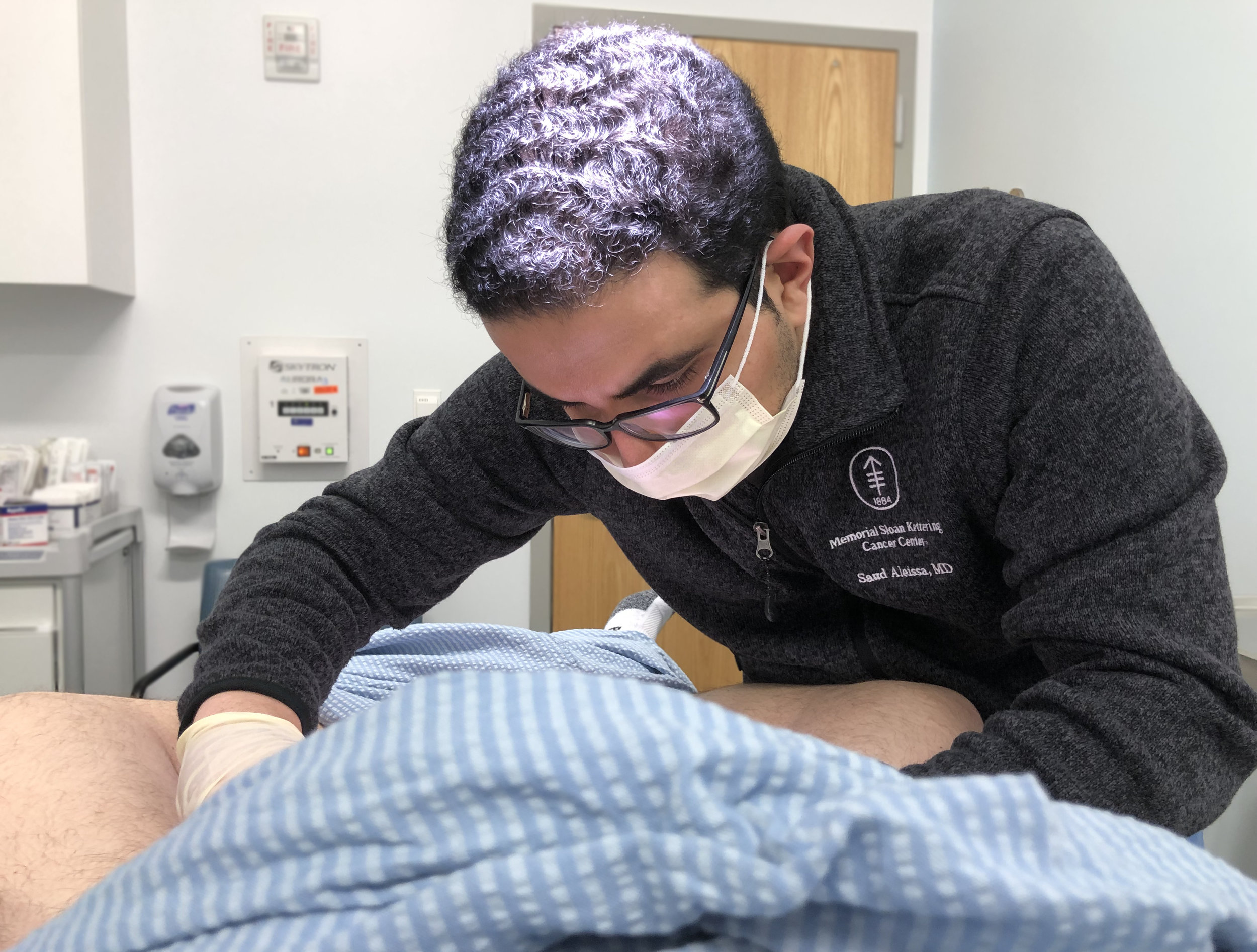EMPD Biopsies
What is a biopsY?
Biopsies are often used to determine if a patient has extramammary Paget's disease (EMPD). A biopsy is a sample of tissue taken from a patient so that a pathologist can examine it to determine whether EMPD is present.
Dr. Saud Aleissa, at Memorial Sloan Kettering Cancer Center in New York, removes a biopsy sample from an EMPD patient. The procedure is commonplace in EMPD diagnosis and treatment.
There are many different types of biopsies but the most common types used in EMPD diagnosis are the punch or shave biopsies. Other biopsies include the surface or wedge biopsies.
A doctor will use local anesthetic to anesthetize an area before a biopsy is preformed. This is generally done with a very small needle and typically the patient feels a small pinch. The patient is awake during the procedure, which takes just a few minutes per biopsy.
With a punch biopsy the doctor will use an instrument that punches a small hole through the top layers of the skin to remove a tissue sample. With a shave biopsy the doctor will shave a few layers of skin. Sometimes a stitch or two is needed after a punch biopsy.
A surface biopsy is performed by gently scraping cells from the surface of the skin. A wedge biopsy involves the use of a scalpel, removing a small wedge of tissue for testing. Large biopsies are also sometimes used when an area has continued EMPD symptoms and suspicions.
Depending on the location and type of biopsy, it often takes a few weeks to a few months for a biopsy to totally heal.
If a biopsy (and associated pathology) determines a patient has EMPD, additional mapping or scouting biopsies are frequently used to help establish the extent of the EMPD.
When extramammary Paget's disease (EMPD) is located in one area (as noted by the blue circle), scouting biopsies will often be used (as noted with the blue arrows), to help determine whether the EMPD covers a larger area. A stitch is frequently used to close each biopsy incision.
If numerous biopsies are needed the doctor may choose to perform the biopsy procedures using minimal or moderate general sedation. With this technique, often referred to as twilight anesthesia, a small dose of general anesthesia is used. The patient is sedated, but not unconscious, which means that much of the biopsy process is forgotten by the patient. Under this approach the patient is awakened quickly and goes home rapidly.
In vivo reflectance confocal microscopy (RCM) is a non-invasive imaging procedure that allows real-time viewing of tissue, resulting in virtual biopsies. With this procedure no tissue is removed as a pathologist reviews the suspected EMPD area in real-time.
Treatments for extramammary Paget’s disease (EMPD) often differ but frequently include one or more of the following: Mohs surgery, wide local excision (WLE) surgery, topical creams, carbon dioxide (CO2) laser, photodynamic therapy (PDT), cavitational ultrasonic surgical aspiration (CUSA), radiation therapy, skin grafts, and chemotherapy.
The content on this website, including text and visual materials, is intended to raise awareness of extramammary Paget’s disease (EMPD) and help individuals understand its complexities. However, it is not a substitute for professional medical advice, diagnosis, or treatment, nor does it endorse any specific treatments, tests, physicians, procedures, or products. If you suspect symptoms of EMPD, we encourage you to consult a qualified healthcare provider for proper evaluation and guidance.



